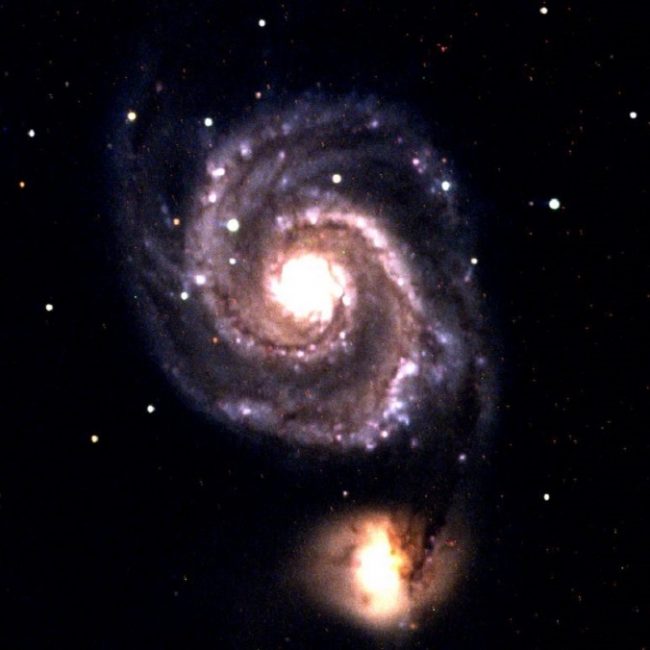Written by Elaine Pritzker
July 6, 2020

A GALAXY NOT SO FAR AWAY
The Whirlpool Galaxy — one of 110 Messier objects referred to as M51 — is known as a grand-design spiral galaxy due to it’s well defined spiral arms and is found in the constellation Canes Venatici. At roughly 23 million light years from Earth, the Whirlpool Galaxy is one of the most visible galaxies because it is so close.
TAKE A LOOK
With good observing conditions, M51 can be seen with binoculars. Light pollution in Miami makes seeing objects like this very difficult, but the area can still be observed to put these amazing images into perspective. The Stocker AstroScience Center Clear Sky Chart is a great tool to determine the best viewing conditions.
Turn off as many lights around your home as possible. A few minutes in the dark will help your eyes get adjusted and make it easier to see faint objects.
- Locate the Big Dipper. Look one third of the way up from the horizon to the top of the north sky. Also known as the Plough, the Big Dipper is located in the Ursa Major constellation and rotates around the North Star no matter the season or time of night.
- Locate Alkaid, the bright star marking the tip of the Big Dipper handle. While the direction of M51 relative to Alkaid can change depending on the time of night and time of year, it can be found by looking between Alkaid and Cor Caroli, the brightest star in the Canes Venatici constellation.
- Use a sky chart to help confirm the correct location has been found.
LISTEN
Many FIU CASE astronomers also happen to be musicians. When searching for the Whirlpool Galaxy, Jim Webb, director of the Stocker AstroScience Center, recommends listening to:
- Dark Side of the Moon – Pink Floyd
- Music from the Galaxies – Fiorella Terenzi
- Reaching for the Stars – Jim Webb
BEHIND THE LENS
These images were taken with the SARA Kitt Peak National Observatory 1-meter telescope by Ken Rumstay, Daniella Roberts and Ninos Hermis on June4, 2014. The images were reduced and color combined at FIU by Webb and intern Bobby Martinez. The image is made up of separate exposures taken through blue, yellow and red filters, then combined on a computer to produce the final true color image. Additional images of the Whirlpool galaxy and other Messier Objects can be explored in the Stocker AstroScience Center Messier Catalog. All images in the catalog were captured using the Stocker AstroScience Center 24” telecope.
Nicholas Ogle contributed to this article.
The Stocker AstroScience Center provides stunning views of stars clusters, galaxies, planets, moons and more. Take a guided journey through celestial images captured by South Florida’s only research-grade telescope and find new ways to engage the cosmos. Follow FIU@Home on CASE News for more of the universe.